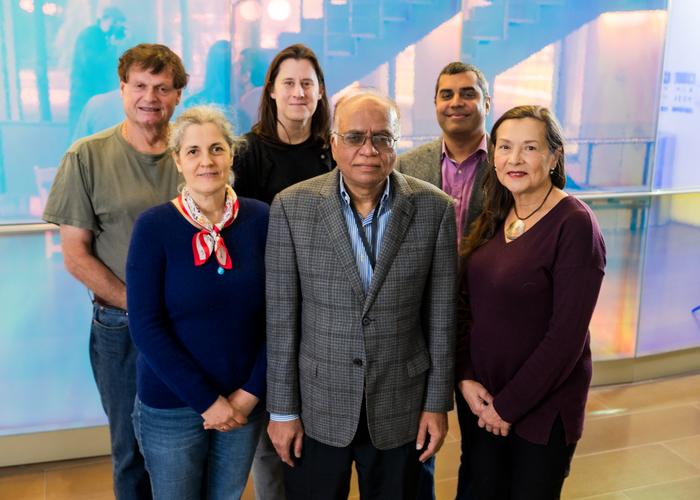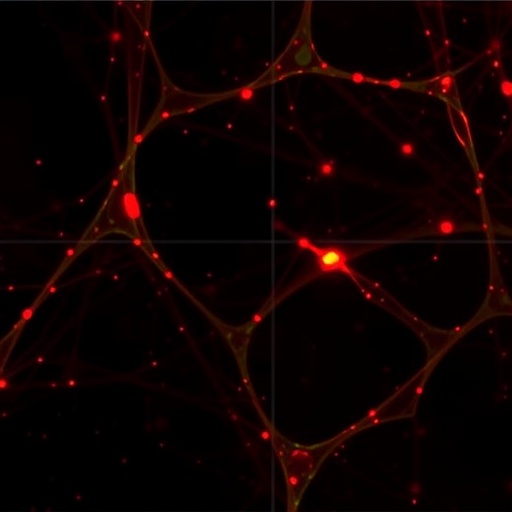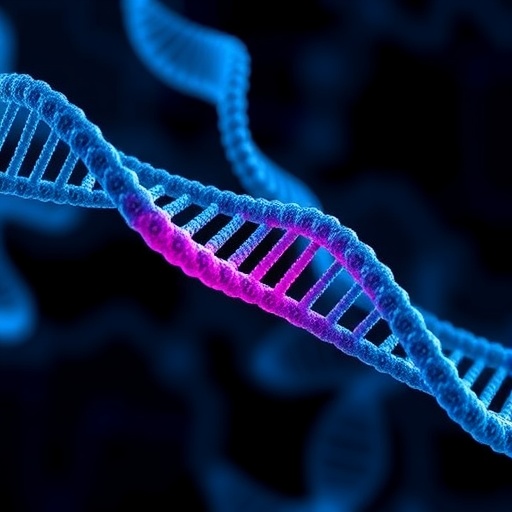
In an unprecedented advancement within the field of maternal and fetal health, scientists from Rice University, in collaboration with experts from Baylor College of Medicine (BCM), have developed a novel method for detecting toxic chemicals from tobacco smoke in human placental tissues. Published on February 10, 2025, in the esteemed Proceedings of the National Academy of Sciences, this groundbreaking research promises to provide critical insights into the adverse effects of environmental exposures during pregnancy.
Placentas serve as crucial lifelines for developing fetuses, nourishing them while simultaneously acting as a barrier against potential toxins. However, when exposed to harmful substances like polycyclic aromatic hydrocarbons (PAHs) and their derivatives, known as polycyclic aromatic compounds (PACs), both maternal and fetal health can be compromised. These toxicants are predominantly produced from the incomplete combustion of organic materials, making their detection imperative for both health monitoring and preventive measures.
Using a marriage of innovative light-based imaging techniques and cutting-edge machine learning algorithms, the research team was able to identify and classify the presence of PAHs and PACs in placental samples with remarkable speed and precision. The use of vibrational spectroscopy, enhanced through machine learning, enabled the researchers to distinguish between placentas from smokers and non-smokers, thereby revolutionizing their ability to detect these harmful substances in maternal tissues.
Oara Neumann, a research scientist at Rice University and the study’s lead author, emphasized the significance of this work. “Our research directly addresses a vital challenge in understanding maternal and fetal health,” she stated. “By employing machine-learning enhanced vibrational spectroscopy, we have created a tool that accurately detects harmful compounds in placenta samples. The implications for this study can reach far beyond mere detection; they can inform public health strategies aimed at safeguarding both mothers and their babies.”
The team analyzed placental tissues collected from women who reported smoking during pregnancy along with samples from self-identified non-smokers. Their findings revealed PAH and PAC presence exclusively in samples from those who smoked, validating the method’s efficacy. Furthermore, this research not only holds value for monitoring toxic exposures from tobacco smoke but also opens avenues for identifying contaminants from other sources such as wildfires and industrial sites.
The methodology employed in this ground-breaking study rests heavily on advances in surface-enhanced spectroscopy. This technique utilizes specially engineered nanomaterials, specifically gold nanoshells, to amplify and refine the interaction of focused light wavelengths with targeted compounds. By doing so, the researchers could extract rich spectroscopic data that provides deep insights into molecular structures, a capability particularly essential for analyzing tiny, trace concentrations typically found in complex biological and environmental samples.
Naomi Halas, a professor at Rice and a leader in nanoengineered photonics, contributed significantly to the development of this technique. She explained the dual approach used by the team: “By combining surface-enhanced Raman spectroscopy with surface-enhanced infrared absorption, we generate highly detailed vibrational signatures from the placenta samples.” This detailed modeling allowed the researchers to capture unprecedented data on the subtle chemical patterns present within the tissues.
The incorporation of machine learning into this analytical process has further elevated the capability of the research team, especially by employing specific algorithms like characteristic peak extraction (CaPE) and characteristic peak similarity (CaPSim). These computational tools can unveil hidden patterns and discern significant chemical signatures from complex datasets, effectively functioning as an analytical magnifying glass that highlights critical information otherwise lost in noise.
Ankit Patel, an assistant professor at Rice and one of the researchers involved, elucidated how machine learning acts similarly to the “cocktail-party effect,” allowing targeted attention to crucial data amidst a cacophony of incomplete information. This analogy underscores the transformative effect of machine learning in resolving complex data issues and enhancing detection capabilities in critical health applications.
As the need for timely and effective methods of assessing environmental risks becomes more pressing, the relevance of this research cannot be overstated. Traditional assays often require extensive preparation, labor, and time, effectively limiting their practical application in urgent situations. This newly developed method not only streamlines the detection process, providing rapid results, but it also equips healthcare providers with essential insights for evaluating risks tied to maternal and fetal health.
Bhagavatula Moorthy, a professor of pediatrics at BCM, highlighted the potential ramifications of the research. “This innovative technique sets the foundation for future advancements in detecting hazardous chemicals not only in placental tissues but also in other biological fluids, such as blood and urine. We can significantly enhance our environmental monitoring systems and risk assessment strategies moving forward.”
Ultimately, this collaborative effort represents a vital leap towards understanding and mitigating the risks associated with harmful environmental exposures during pregnancy. It stands as a testament to the critical intersection of machine learning, advanced spectroscopy, and human health, showcasing the power of interdisciplinary approaches to solve complex problems.
With the establishment of such sophisticated detection methods, future research holds the promise of unveiling further complexities surrounding maternal and fetal health. As we gain a deeper understanding of how environmental toxins affect the human body, we can work towards innovative public health measures designed to protect vulnerable populations.
As this study illustrates, the journey to understanding and improving health outcomes for mothers and their newborns continues to evolve, fueled by the evolving landscape of technology and research. This pioneering work not only sheds light on the implications of smoking during pregnancy but also emphasizes a broader narrative about environmental health and public awareness.
The rigorous methodologies employed in this research can pave the way for future studies aimed at exploring the multifaceted relationships between environmental toxins and health outcomes. By continuing to advance our analytical capabilities through techniques like machine learning and advanced spectroscopy, we can construct sharper lenses through which to view the challenges of modern health.
This study’s implications extend beyond academic interest; they resonate deeply with public health goals aimed at reducing the prevalence and impact of toxic exposures. Through enhanced detection methods, policymakers and healthcare providers can devise better strategies and interventions that prioritize maternal and child health, ultimately leading to healthier futures for countless families.
In summary, the convergence of machine learning and advanced spectroscopic techniques has marked a significant turning point in our understanding of toxic exposures during pregnancy. As the research community continues to explore the depths of this intersection, the potential for meaningful health improvements becomes increasingly tangible, promising a future where every pregnancy can be safeguarded from the harms of environmental toxins.
Subject of Research: Detection of toxic chemicals in human placenta
Article Title: Machine Learning-enhanced Surface-Enhanced Spectroscopic Detection of Polycyclic Aromatic Hydrocarbons in Human Placenta
News Publication Date: 10-Feb-2025
Web References: https://news.rice.edu/
References: DOI: 10.1073/pnas.2422537122
Image Credits: Photo by Jeff Fitlow/Rice University
Keywords: Placenta, Hydrocarbons, Environmental health, Machine learning, Tobacco, Pregnancy, Raman spectroscopy, Maternal health, Toxic exposure, Spectroscopy, Public health, Health monitoring.
Tags: advancements in prenatal diagnosticsdetection of toxic chemicals in placentaenvironmental exposures during pregnancyhazardous chemicals in human tissuesinnovative imaging techniques in healthcaremachine learning in toxicologymaternal and fetal health researchplacental health monitoringpolycyclic aromatic hydrocarbons PAHsRice University BCM collaborationtobacco smoke effects on pregnancyvibrational spectroscopy in medical research





